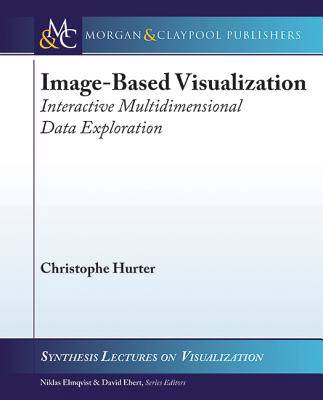
- Retrait gratuit dans votre magasin Club
- 7.000.000 titres dans notre catalogue
- Payer en toute sécurité
- Toujours un magasin près de chez vous
- Retrait gratuit dans votre magasin Club
- 7.000.0000 titres dans notre catalogue
- Payer en toute sécurité
- Toujours un magasin près de chez vous
64,45 €
+ 128 points
Description
Our society has entered a data-driven era, one in which not only are enormous amounts of data being generated daily but there are also growing expectations placed on the analysis of this data. Some data have become simply too large to be displayed and some have too short a lifespan to be handled properly with classical visualization or analysis methods. In order to address these issues, this book explores the potential solutions where we not only visualize data, but also allow users to be able to interact with it. Therefore, this book will focus on two main topics: large dataset visualization and interaction. Graphic cards and their image processing power can leverage large data visualization but they can also be of great interest to support interaction. Therefore, this book will show how to take advantage of graphic card computation power with techniques called GPGPUs (general-purpose computing on graphics processing units). As specific examples, this book details GPGPU usages to produce fast enough visualization to be interactive with improved brushing techniques, fast animations between different data representations, and view simplifications (i.e. static and dynamic bundling techniques). Since data storage and memory limitation is less and less of an issue, we will also present techniques to reduce computation time by using memory as a new tool to solve computationally challenging problems. We will investigate innovative data processing techniques: while classical algorithms are expressed in data space (e.g. computation on geographic locations), we will express them in graphic space (e.g., raster map like a screen composed of pixels). This consists of two steps: (1) a data representation is built using straightforward visualization techniques; and (2) the resulting image undergoes purely graphical transformations using image processing techniques. This type of technique is called image-based visualization. The goal of this book is to explore new computing techniques using image-based techniques to provide efficient visualizations and user interfaces for the exploration of large datasets. This book concentrates on the areas of information visualization, visual analytics, computer graphics, and human-computer interaction. This book opens up a whole field of study, including the scientific validation of these techniques, their limitations, and their generalizations to different types of datasets.
Spécifications
Parties prenantes
- Auteur(s) :
- Editeur:
Contenu
- Nombre de pages :
- 127
- Langue:
- Anglais
- Collection :
Caractéristiques
- EAN:
- 9781627057585
- Date de parution :
- 01-12-15
- Format:
- Livre broché
- Format numérique:
- Trade paperback (VS)
- Dimensions :
- 190 mm x 235 mm
- Poids :
- 235 g

Les avis
Nous publions uniquement les avis qui respectent les conditions requises. Consultez nos conditions pour les avis.






